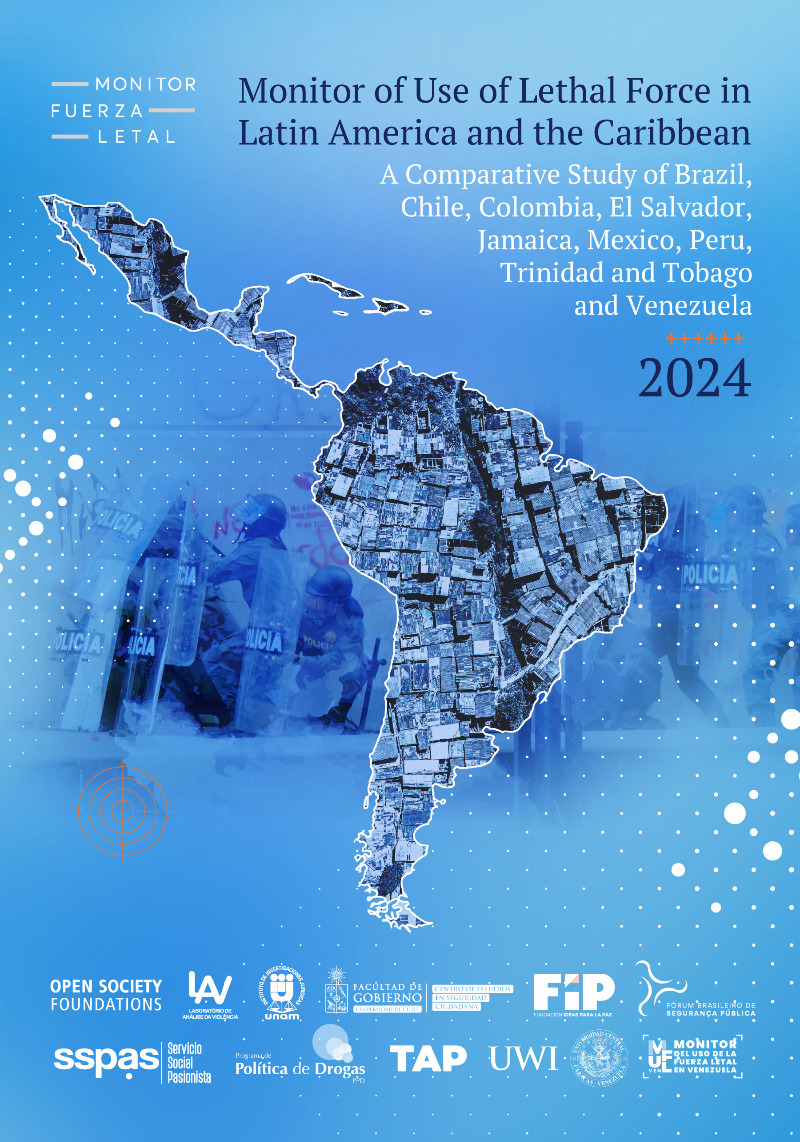
Monitor of use of lethal force in Latin America and the Caribbean
A comparative study of Brazil, Chile, Colombia, El Salvador, Jamaica, Mexico, Peru, Trinidad and Tobago and Venezuela
Mohor Bellalta, Alejandra
Ávila Silva, Andruss
Arias Pérez, Ángel
Silva Forné, Carlos
Pérez Correa, Catalina
Kiefer Basoa, Cecilia
Garay Chaparro, Cristian
Marques da Silva, David
Pacheco Lopes da Silva, Dennis
Castro Vargas, Enrique
Colocho, Gabriela
Cano, Ignacio
Sobral, Isabela
Olivares Berrios, Iván
Castillo Muñoz, Jerónimo
Coutiño Trejo, José Enrique
Ávila, Keymer
Da Rocha, Mafalda
Olivares, Maya
Suárez Rueda, Manuela
Del Solar, María José
Díaz Henríquez, Monserrat
Seepersad, Randy
Vegas, Romy
Weekes, Tarik
Carlin Mendívil, Thaiz
Giraldo, Xiomara
Editorial:Mohor Bellalta, Alejandra Margarita
Materia:Criminología
Clasificación:Delincuencia callejera / delincuencia con uso de armas de fuego
Público objetivo:Profesional / académico
Publicado:2024-04-16
Número de edición:1
Número de páginas:0
Tamaño:18Mb
Soporte:Digital
Formato:PDF (.pdf)
Idioma:Español
Inglés
Libros relacionados
Orientaciones para la detección de víctimas de explotación criminal en Chile - Dufraix Tapia, Roberto; Andrade Moreno, Marcos Antonio
Acoso sexual universitario y perspectiva de género. Nudos, tensiones y enseñanzas - Ruiz Sepúlveda, Karla Daniela
Monstruos humanos, los hijos olvidados del Diablo - Matus Matus, Alvaro
Monstruos humanos - Matus Matus, Alvaro
Reseña
The Monitor of Lethal Force in Latin America presents its third study comparing a series of indicators to evaluate the use of lethal force by state agents. The study includes nine countries from the continent: Brazil, Chile, Colombia, El Salvador, Jamaica, Mexico, Peru, Trinidad and Tobago and Venezuela. The new study builds on previous ones, using a common methodology and common indicators that allow for the analysis of the use of lethal force in these countries so as to better assess institutional performance in each of them. The objective of this study, as in the previous ones from 2019 and 2022, was to produce comparable data in order to monitor the use and abuse of lethal force in the participating countries in a way that would allow international comparisons and comparisons between different years within a given country.
The abuse of lethal force by the State is a common problem in many countries in the region. Yet despite the frequency of cases of abuse, many are never investigated. In several countries the use of lethal force by state agents is taken for granted as legitimate and victims have the burden of proving the abuse. The study of use and abuse of lethal force is a tool to evaluate institutions and to understand the phenomenon. It seeks to alert possible cases where abuse of lethal force is prevalent or where governmental opacity is such that there is no way of knowing whether it is legitimate or not.
In the following section, we present the common methodology used both to gather data and to calculate indicators for use and abuse of lethal force. This section includes an explanation of the basic concepts used and of each indicator: how they are constructed and what each one intends to measure. The third section offers comparative results for participating countries. This section contains both data from official sources and from the press. Not all countries were able to gather all the official information. Data gathered from the press (and in some cases official data) have different biases, making comparisons between each other difficult.
The fourth section contains a chapter for each of the countries studied: Brazil, Chile, Colombia, El Salvador, Jamaica, Mexico, Peru, Trinidad and Tobago, and Venezuela. In each of these chapters, there is specific information regarding the collection of information in that country (whether official or from the press) and the methodology used for the construction of indicators. Each national chapter also contemplates basic information on the regulation of lethal force, the general context of the country and specific recommendations for the country. The last section includes general recommendations and conclusions for the region as a whole.




